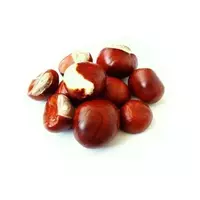Chestnut softest (chinese)

The softest or Chinese chestnut belongs to the genus Chestnut from the Bukovy family. In the natural environment, the range of this species covers countries such as China, Korea and Vietnam, while today the plant is perfectly naturalized in North America.
Currently, the softest chestnut (Chinese) is actively cultivated in Western Europe, and this species was introduced to the continent of North America and spread due to the death of the dentate chestnut (the reason for this is the brought variety), since the harmful fungus Endotia parasitica moved with it, to which the chestnut has the softest (Chinese) immunity. In China, a number of large-fruited varieties were artificially bred, whose taste values are much higher than other types of chestnut.
In mountainous areas at an altitude of up to 2500 meters, the softest chestnut (Chinese) forms small forests. It grows successfully on soils rich in calcium. The tree with a wide crown begins to bear fruit at the age of 5-8 years, reaching a height of up to twenty meters. In a young state, the shoots of the softest chestnut (Chinese) are soft white and pubescent, after which they acquire a brown tint.
Silky, pubescent buds of the softest chestnut (Chinese) are relatively small and differ in a wide-ovate shape. The leaves are oblong-ovate or elliptical with a length of up to 22 centimeters have a width of 5-7 centimeters. The fruits of the softest chestnut (Chinese) grow 2-3 pieces, in height and across they are 2-3 centimeters.
In cooking, the softest chestnut (Chinese) is very highly valued due to its gastronomic qualities. The fruits do not require much processing, so they are usually fried or baked, having previously cut the chestnuts with a knife or punctured with a fork. This is necessary so that the softest chestnut (Chinese) does not "explode" due to moisture accumulated inside.
Sometimes the softest chestnut (Chinese) is boiled - in this case, you do not need to cut the fruits. It is noteworthy that boiled chestnuts are significantly inferior to fried and baked ones in taste. In principle, after cleansing from the shell, the softest chestnut (Chinese) is ready for consumption: add some sauce, some meat or fresh greens to the fruits. The only problem is that without thermal treatment, the softest chestnut (Chinese) is quite difficult to clean from the shell and the rigid dense film available under it.
After minimal culinary processing, the softest chestnut (Chinese) remains quite dense and perfectly combined with meat dishes, vegetables, dessert dishes and even ice cream. It is used to make sweet soufflé, add to pies or muffins, bake bread with chestnuts or make sauces.
chestnut softest (Chinese) 224 kCal
The energy value of the softest chestnut (Chinese) (Ratio of proteins, fats, carbohydrates - ju):
Proteins: 4.2 g (~ 17 kCal)
Fats: 1.11 g (~ 10 kCal)
Carbohydrates: 49.07 (~ 196 kCal)
Energy ratio (bj | y): 8% | 4% | 88%
 Español
Español Français
Français Português
Português Русский
Русский 简体中文
简体中文 繁體中文
繁體中文 日本語
日本語 한국어
한국어 العربية
العربية Türkçe
Türkçe Қазақ
Қазақ Deutsch
Deutsch Italiano
Italiano Українська
Українська
